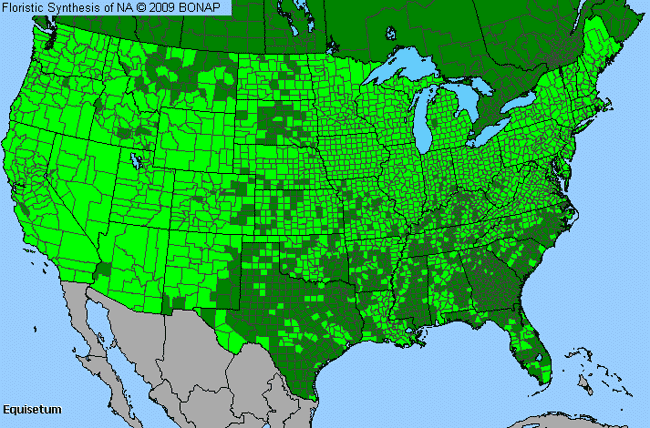Horsetail, Scouring-Rush (Equisetum)

Horsetail, Scouring-Rush Genus Details

Horsetails are perennials native to North America. They are one of the most primitive living plant families and were huge trees that dominated the landscape during the Carboniferous period, 300 to 400 million years ago. Today species are herbaceous and less than 5 m tall. The characteristic feature of the family is hollow, jointed stems. In some species, the branches appear from the axils of the leaves. Horsetails reproduce by spores and creeping rhizomes. They are toxic to livestock, especially horses.
Horsetail, Scouring-Rush Allergy Info

This genus is not commonly cited as a source of allergy.
Horsetail, Scouring-Rush Pollen Description

Equisetum pollen grains are spheroidal and 1-aperturate. The pore is circular with a thickened rim. The perine (periospore) is faintly granular and wrinkled.
The grains are 38-56 micrometers in diameter (including perine).
Species in This Genus

Allergenicity Legend:
 Mild Allergen |
Mild Allergen |
 Moderate Allergen |
Moderate Allergen |
 Severe Allergen |
Severe Allergen |
 Allergy Test Available
Allergy Test Available
Horsetail, Scouring-Rush (Equisetum) is a genus of the EQUISETACEAE family.
This genus includes the following allergenic species:
This genus includes the following allergenic species:











